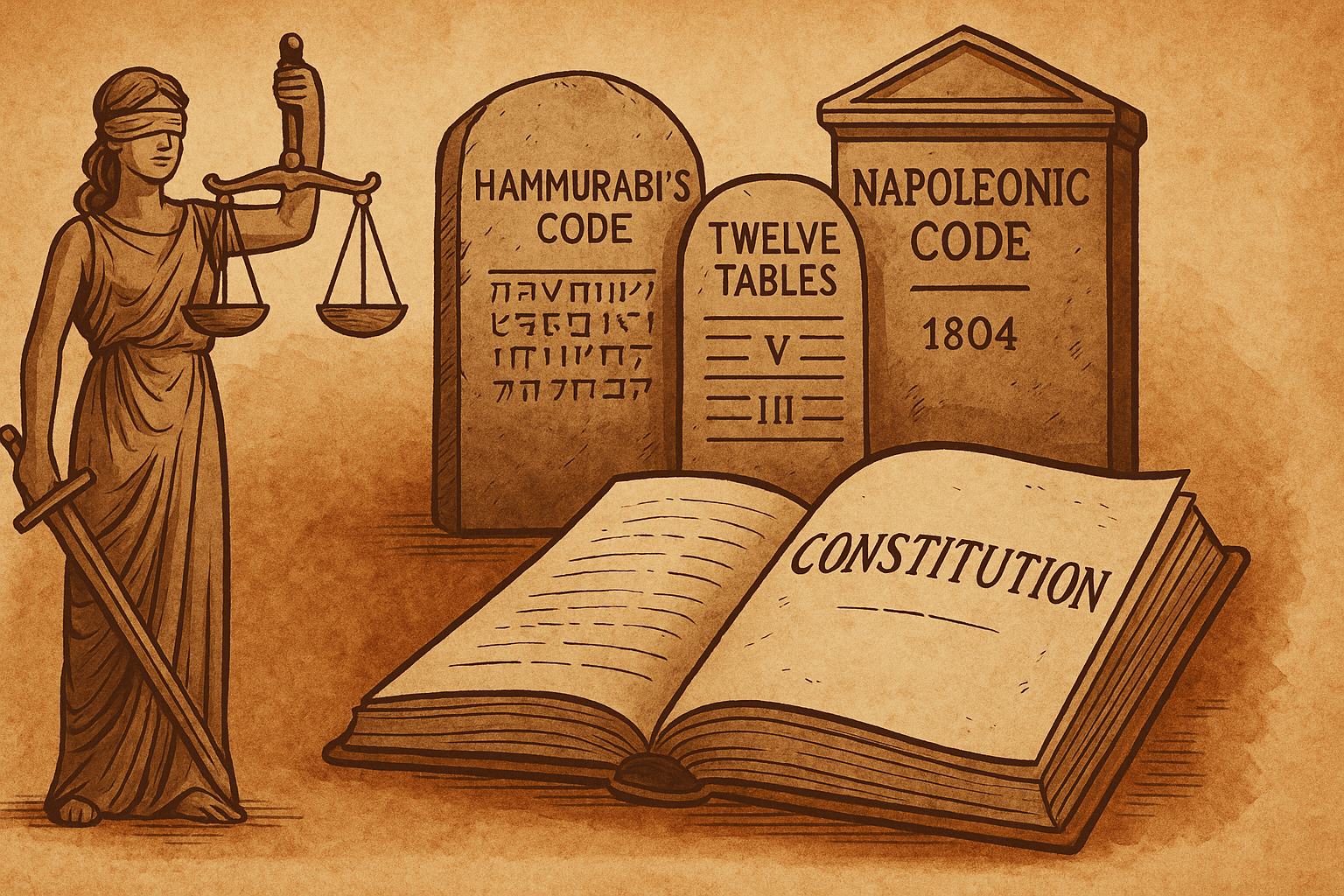In the early days of human society, people lived in small communities and tribes, guided only by customs and traditions. Respect for elders, fear of the Gods, and mutual understanding directed human life, and disputes were settled by elders, and based on a sense of right and wrong.
As societies expanded and human life grew into larger communities, societies, and civilizations, conflicts arose. How could justice be served? Who owns the land? Who deserves justice? Such questions led to the formation of legal systems,slowly transforming from the spoken words of elders to written laws carved in stone, like Hammurabi’s Code or Rome’s Twelve Tables.
In ancient Babylon, King Hammurabi determined the complexities of society and recognized the growing need for structure, as society was facing trade issues, land disputes, and conflicts within families. King Hammurabi understood that society can’t rely on the traditions passed down by its ancestors, and an order needed to be maintained. He introduced a written code of laws, etching them into stone and displaying them publicly. The code contained 282 laws covering trade, family matters, and more. It was the earliest example of written law for justice in society, which transformed into the modern justice system.
Centuries later in medieval England, another revolutionary change came when people stood against taxes and unjust treatment of the oppressive ruler, King John. In 1215, at Runnymede, the king was forced to sign Magna Carta, which declared even the monarch must obey the law. It promised certain rights to people, like fair trials. This laid the foundation for constitutional principles which shape democracy today.
The justice system evolved over time alongside the development of England. Judges began to look at past rulings as precedents to guide their judgments, establishing a system where law was not just based on the whims of individuals but on established patterns of reasoning and fairness. This system became known as common law, which emphasized fairness and consistency. This law spread across the English world, influencing the legal systems of countries like the United States, Canada, and India.
At the same time, Europe was in chaos. After the French Revolution, people of France were determined to rebuild their nation with fairness and equality, and they needed a legal system that could maintain order and stability. In 1804, Napoleon Bonaparte introduced the Napoleonic Code, a set of civil laws that covered everything from property and contracts to family matters. The Napoleonic Code was significant as it emphasized equality before the law, and it was one of the first legal systems to treat all citizens equally regardless of class.
The Napoleonic Code not only shaped France but also influenced many legal systems in Europe, Latin America, and Africa. Its focus on clear, systematic laws created a lasting legacy that still impacts legal systems today.
In 20th century, a newly formed country in South Asia, Pakistan, had been through tumultuous times, with political instability and uncertainty about its future. The people needed a framework that defines and guarantees their rights and responsibilities and ensures the stability of the country. After years of struggle, Pakistan adopted a constitution in 1973. The constitution outlined the structure of government, defined the rights of citizens, and set clear limits on the power of rulers. It was a blueprint for democracy, ensuring that all citizens get fairly treatment under the law. The Constitution of Pakistan was a milestone in the country’s journey toward justice and democracy, protecting the fundamental rights of its people and providing the foundation for modern legislation.
From oral traditions to ancient codes to modern-day written constitutions, the law has evolved with human civilization. Each system is built on the lessons of the past. This evolution highlights the enduring need for clear, written rules that ensure fairness, justice, and equality for all.



